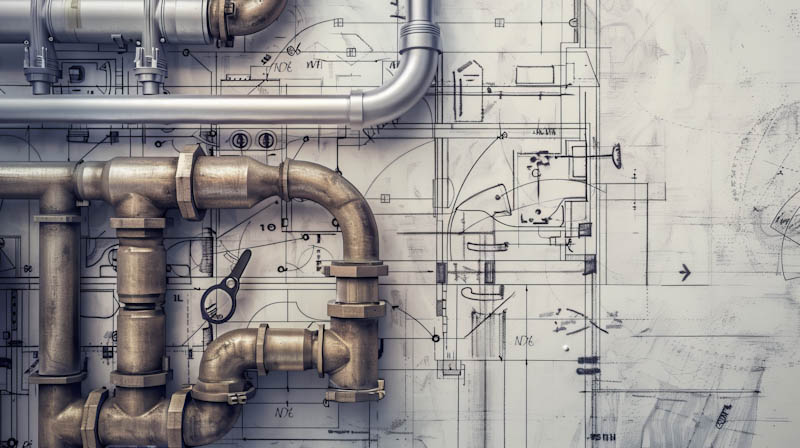A property manual, also known as a property management manual, is a comprehensive guide that outlines the policies, procedures, and best practices for managing a property. It serves as a valuable resource for property owners, property managers, and other staff members involved in property management. This article will delve into
- the importance of a property manual
- its components
- how to create and maintain it effectively
- how it enhances property management.
Additionally, we’ll discuss training staff on using the property manual and common mistakes to avoid when developing one. Expanding on the significance of a property manual, it serves as a comprehensive reference tool for all stakeholders involved in property management.

From property managers to maintenance staff, having access to a centralized manual streamlines communication and ensures everyone is on the same page. This can lead to increased efficiency in handling day-to-day operations and resolving issues promptly, ultimately enhancing tenant satisfaction and retention rates.
In addition, a well-crafted property manual can also act as a training resource for new hires. It provides a structured onboarding process by offering insights into best practices, emergency procedures, and key contacts. This not only accelerates the integration of new team members but also instills a sense of professionalism and standardization in property management practices. By investing in the development and maintenance of a property manual, property owners demonstrate their commitment to excellence and continuous improvement in the management of their real estate assets.
Components of a Comprehensive Property Manual
A comprehensive property manual typically consists of several sections that cover different aspects of property management. These sections may include:
- Rent and Lease Policies
- Maintenance and Repair Procedures
- Accounting and Financial Management
- Marketing and Tenant Acquisition
- Emergency Preparedness and Safety
- Staff Roles and Responsibilities
Each section should address specific policies, procedures, and guidelines related to the respective aspect of property management. This ensures that all relevant information is easily accessible and promotes consistency in decision-making and operations.
Within the “Rent and Lease Policies” section, it is crucial to outline the rental application process, rent collection procedures, lease agreement terms, and policies regarding rent increases and late payments. Clear and transparent communication of these policies helps establish a positive landlord-tenant relationship and reduces misunderstandings.

Plumber black man, kitchen and sink maintenance with tools, focus and pipe repair for drainage in home. Entrepreneur handyman, plumbing expert or small business owner in house for fixing water system.
The “Maintenance and Repair Procedures” section should detail how maintenance requests are submitted, prioritized, and addressed. It should also include information on routine property inspections, preventative maintenance schedules, and emergency repair protocols. By establishing clear procedures for property upkeep, landlords can ensure tenant satisfaction and prolong the lifespan of their assets.
Creating a Property Manual: Step-by-Step Guide
Developing a property manual requires careful planning and consideration. Here is a step-by-step guide to help you create an effective property manual:
- Identify the manual’s purpose and intended audience.
- Gather information and outline the key sections and topics.
- Research local laws and regulations related to property management.
- Draft policies, procedures, and guidelines for each section.
- Organize the content in a logical and easily navigable structure.
- Use clear and concise language, avoiding jargon and technical terms.
- Include supporting documents, templates, and forms where appropriate.
- Review and revise the manual for clarity, accuracy, and completeness.
- Obtain feedback from property managers, staff, and property owners.
- Finalize the manual and distribute it to relevant stakeholders.
By following this step-by-step guide, you can create a property manual that effectively communicates your property management practices and procedures.
When identifying the manual’s purpose, consider whether it will serve as a comprehensive guide for all property management tasks or focus on specific areas such as maintenance, tenant relations, or financial management. Understanding the intended audience is crucial as it will influence the tone, level of detail, and specific topics covered in the manual.
Researching local laws and regulations is essential to ensure compliance and mitigate legal risks. This step may involve consulting with legal experts or industry professionals to stay updated on any changes or new requirements that may impact property management practices.
Updating and Maintaining Your Property Manual
Once your property manual is created, it is crucial to regularly update and maintain it to ensure its relevance and accuracy. This involves reviewing and revising the content periodically to reflect any changes in property management practices, legal requirements, or industry standards.
Encourage feedback from property managers, staff, and property owners to identify areas for improvement or necessary updates. This collaborative approach promotes engagement and ensures that the manual remains a living document that evolves with the needs of your property management operations.
Moreover, consider establishing a designated review schedule for your property manual to guarantee that updates are consistently implemented in a timely manner. By setting specific timelines for revisions, you can prevent the manual from becoming outdated and maintain its effectiveness as a comprehensive guide for property management procedures.
Additionally, leverage technological tools and software solutions to streamline the updating process of your property manual. Utilizing cloud-based platforms or digital documentation systems can facilitate real-time collaboration, version control, and accessibility, making it easier for stakeholders to contribute to and access the manual’s latest revisions.
How a Property Manual Enhances Property Management
A well-developed property manual offers several benefits that enhance property management efficiency and effectiveness. Some of these benefits include:
- Consistency in operations and decision-making.
- Improved communication and coordination among staff.
- Enhanced tenant satisfaction and retention.
- Streamlined processes and reduced errors.
- Efficient onboarding and training of new staff members.
- Clear guidelines for handling emergencies and safety procedures.
By implementing and following a property manual, property managers can optimize their operations and provide a high level of service to both property owners and tenants.
Consistency in operations and decision-making is crucial in property management as it helps create a standardized approach to handling various tasks such as maintenance requests, lease agreements, and tenant communications. This consistency not only improves efficiency but also fosters trust among property owners and tenants, who can rely on a predictable and reliable management process.
Furthermore, an effective property manual can serve as a valuable training tool for new staff members, providing them with a comprehensive resource to understand the property management procedures and protocols. This not only accelerates the onboarding process but also ensures that all team members are aligned in their approach to managing the property, promoting a cohesive and unified management strategy.
Training Staff on Using the Property Manual
Introducing the property manual to staff members requires proper training and guidance to ensure its effective use. Here are some tips for training staff on using the property manual:
- Provide a comprehensive overview of the manual’s content and purpose.
- Walk through each section and highlight key policies and procedures.
- Explain how the manual should be accessed and navigated.
- Emphasize the importance of following the manual’s guidelines and protocols.
- Offer examples or case studies to illustrate the manual’s application in real-life scenarios.
- Encourage questions and provide ongoing support for staff members.
Through proper training, staff members will be equipped with the knowledge and understanding necessary to utilize the property manual effectively in their day-to-day responsibilities.
It is crucial for staff members to not only be familiar with the contents of the property manual but also to understand the rationale behind each policy and procedure outlined. By providing context and real-world examples during training sessions, employees can grasp the significance of adhering to the guidelines set forth in the manual. This deeper level of comprehension can lead to increased compliance and consistency in how tasks are carried out within the organization.
Furthermore, creating interactive training modules or workshops can enhance the learning experience for staff members. Hands-on activities, group discussions, and role-playing exercises can help reinforce key concepts and ensure that employees feel confident in applying the information from the manual to their daily work routines. By engaging employees in active learning opportunities, the training process becomes more dynamic and impactful, resulting in a higher retention of the manual’s content.
Common Mistakes to Avoid
While creating a manual, there are several common mistakes that should be avoided to ensure its effectiveness:
- Overcomplicating the language and making it difficult to understand.
- Being too vague or incomplete in outlining procedures and policies.
- Neglecting to update the manual regularly to reflect changing requirements.
- Omitting key sections or topics that are crucial for property management.
- Not considering feedback from property managers, staff, and property owners.
By being aware of and avoiding these common mistakes, you can create a property manual that serves as a valuable resource for your property management operations.
One crucial aspect to consider when developing a property manual is the inclusion of detailed emergency procedures. This section should outline step-by-step instructions for various emergency scenarios, such as fires, floods, or natural disasters. Clear guidance on evacuation routes, emergency contacts, and safety protocols can make a significant difference in ensuring the well-being of occupants and minimizing property damage during unforeseen events.
Additionally, it is essential to provide a comprehensive overview of maintenance protocols in the property manual. This should include information on routine maintenance schedules, reporting procedures for repairs, and guidelines for handling maintenance emergencies. By empowering property managers and staff with the knowledge and tools to effectively address maintenance issues, you can enhance the overall upkeep of the property and prolong its lifespan.
Your Own Private Property
Don’t forget that a property manual, albeit a simplified one, might be just what you need for your own private property!
Conclusion

In conclusion, a property manual is an essential tool for effective property management. It provides a comprehensive guide that outlines policies, procedures, and best practices to ensure consistency and compliance in property management operations. By following a step-by-step guide, you can create a property manual that covers important aspects of property management, such as rent and lease policies, maintenance and repair procedures, and marketing strategies. Regularly updating and maintaining the manual ensures its accuracy and relevance over time. When properly utilized, a property manual enhances property management efficiency, communication, and overall service quality.
Also Read
See more Helpful Content
Visit our Homepage
